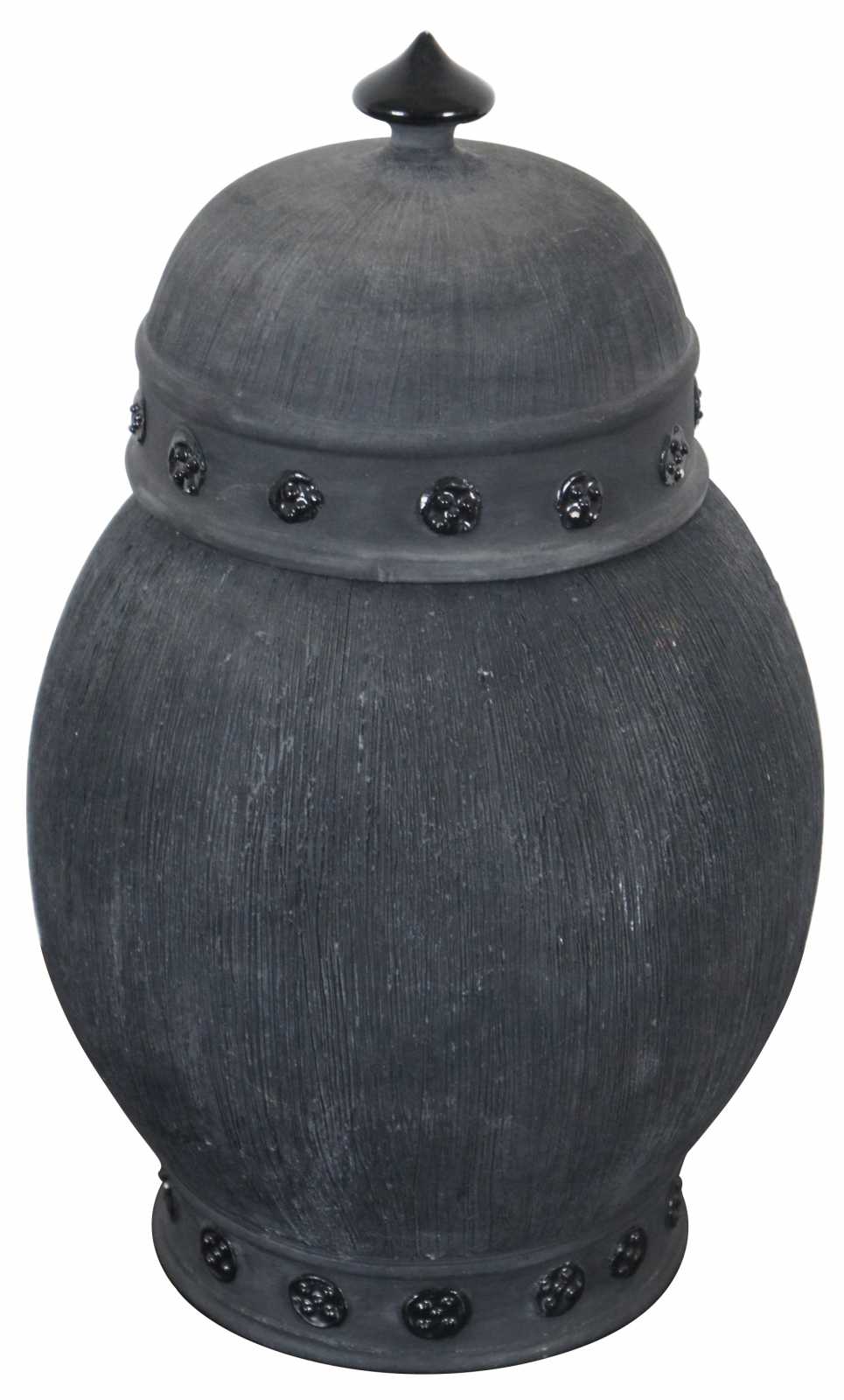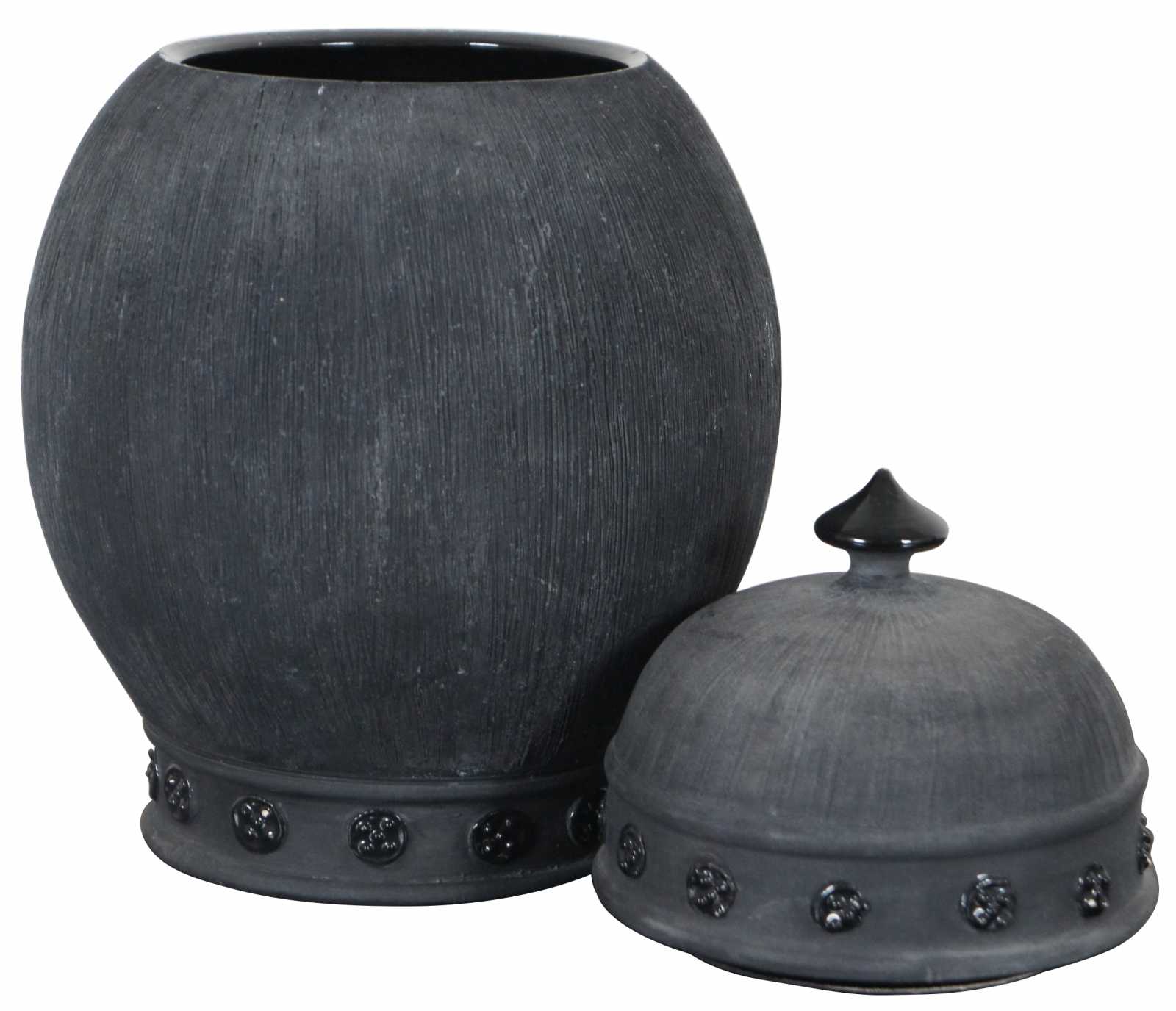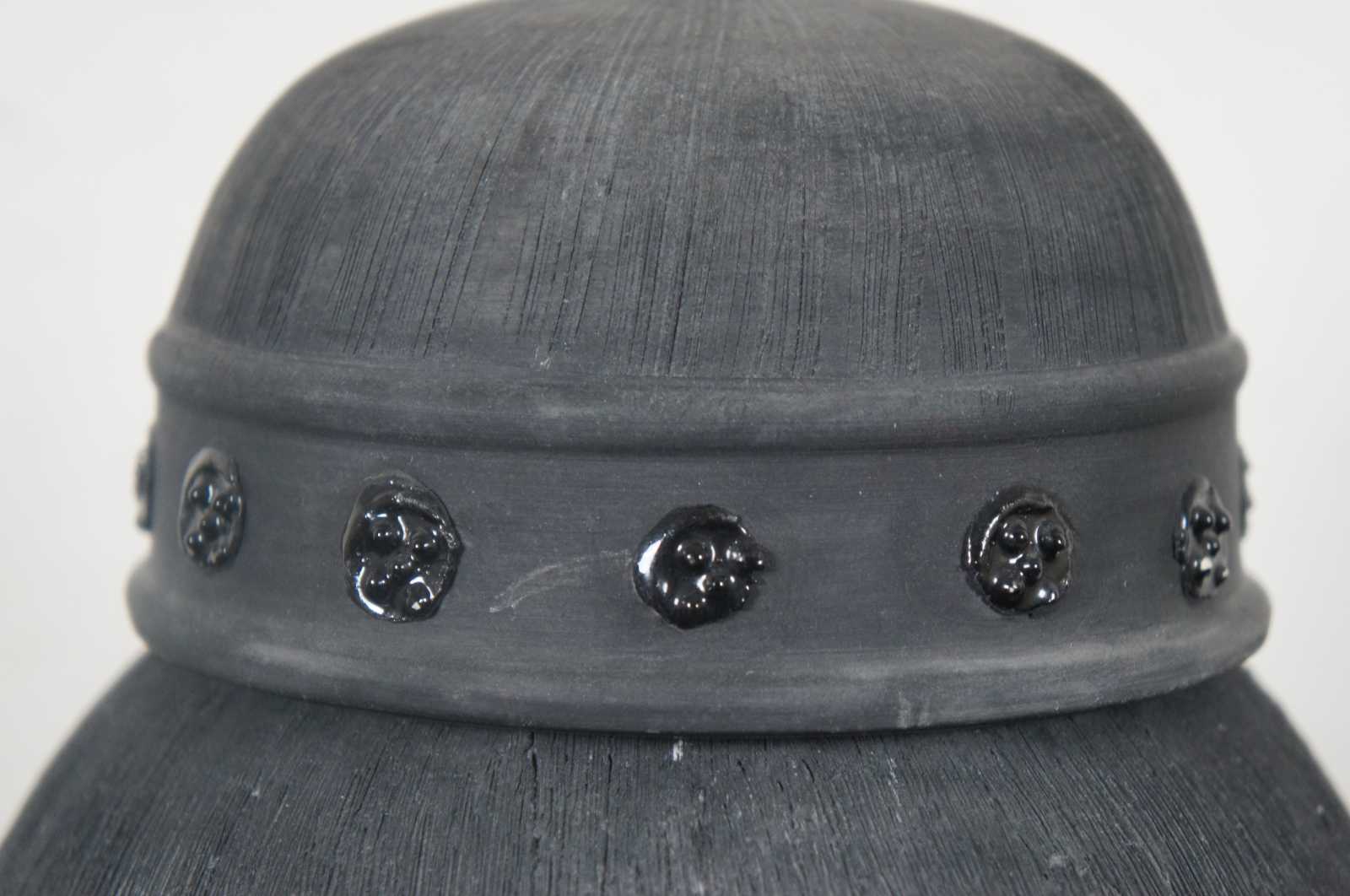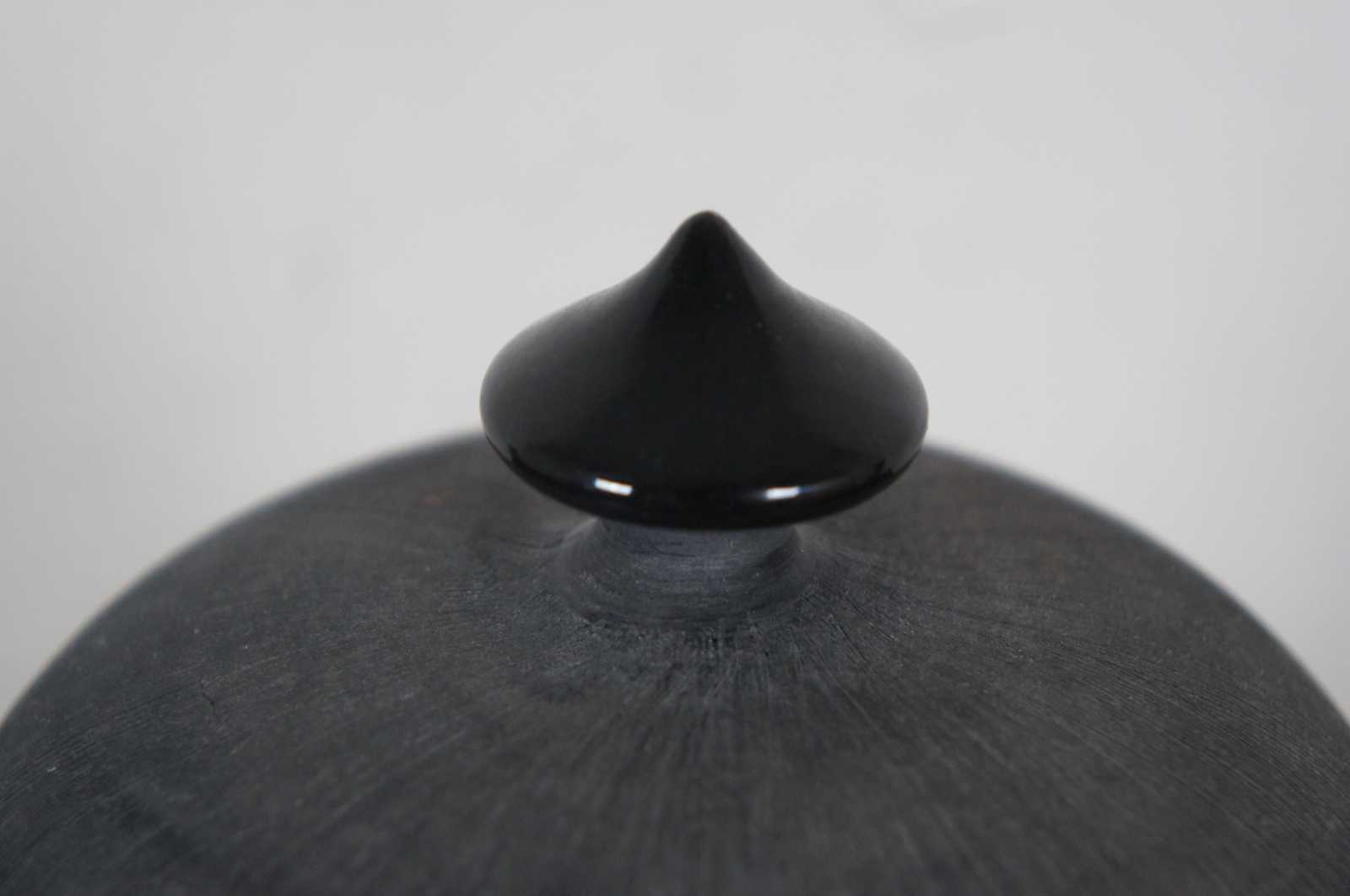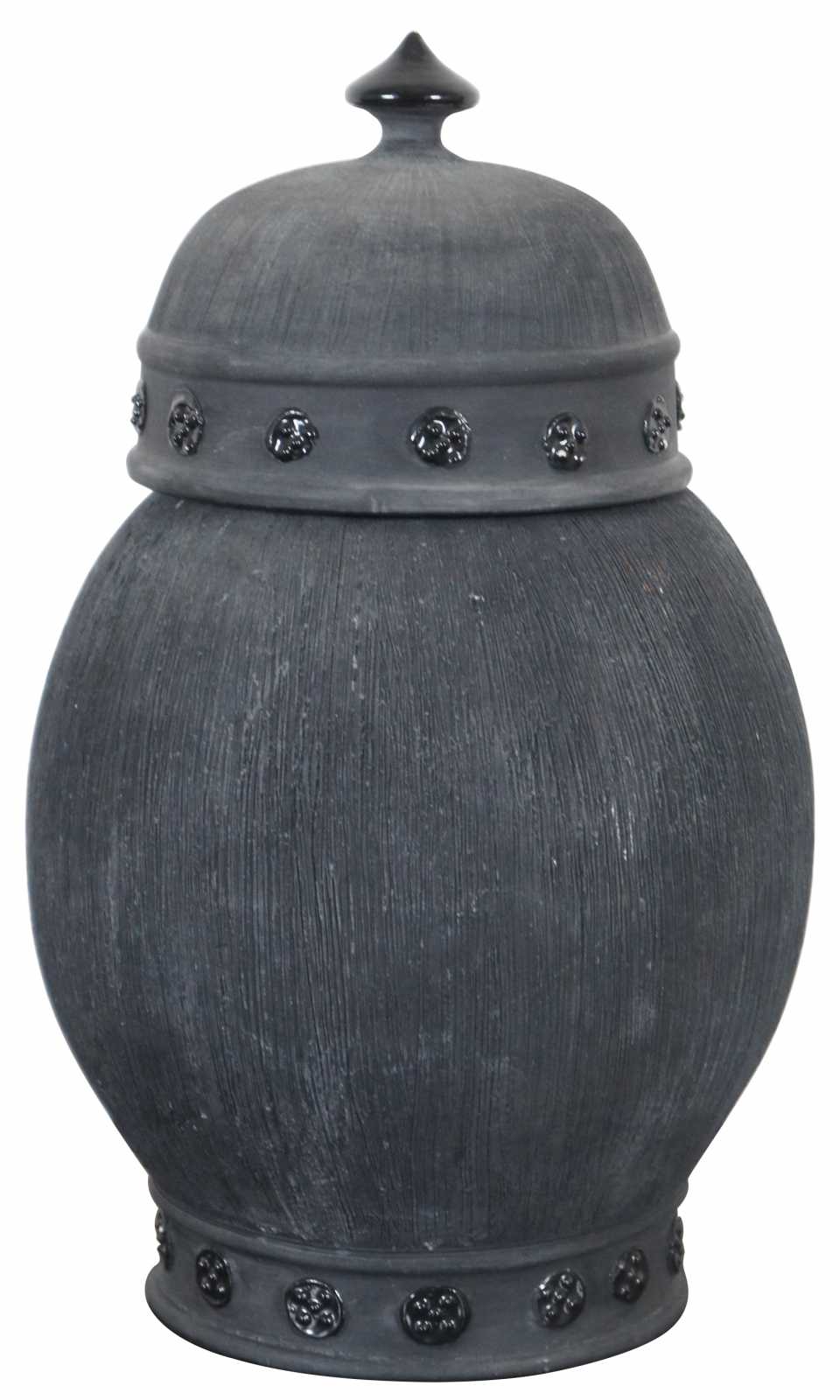
Mid Century Italian Alvino Bagni Raymor R736 Black Ceramic Mantel Urn Italy 12"
Sold
Shipping:
Free Shipping Included
Delivery:
Estimated 2-15 Business Days
Payments:
Credit Card, Check, Cash, PayPal, Apple Pay, Venmo
Returns:
30 Days 100% Money Back Guarantee, Buyer Pays Return Shipping
Description
Mid Century modern lidded Sgraffito style black ceramic pottery mantel urn with glazed accents by Alvino Bagni for Raymor Italy.
Alvino Bagni (1919-2000) for Raymor Import Co (America, 1941-1980)
Alvino Bagni is right up there with Aldo Londi (Head Designer at Bitossi) and Gambone as one of best Italian ceramic designers whose work was imported by Raymor.
Bagni was taken under the wing of Londi in the early part of his career. Bagni did work at Bitossi for a few years in Florence, Italy before opening his own studio in 1956 in Lastra a Signa, on the outskirts of Florence, called Bagni Ceramiche. His work is still commonly misidentified as “Londi” or Bitossi by many who see the Raymor tag.
However, if the vessel still has a Raymor tag on it, and if it is Bagni’s work, it will have “BAG” either typed or handwritten on the tag. Raymor generally used the first three letters of the artist/manufacturers name for their tag codes – with some exceptions. But since many paper sticker tags are lost over time, the most common seen “Bagni for Raymor” mark is a painted mark comprised of an ‘R’ for Raymor, followed by a three or four digit number, probably Raymor’s internal stock number. I have seen pieces of Bagni’s work signed “A. Bagni” but I have not come across his signature being applied on pieces for Raymor.
The vast majority of Bagni’s work was for the U.S. Market, and he even worked with Raymor competitor Rosenthal-Netter (just as Bitossi did).
Bagni did a stunning array of widely different designs for Raymor, and because of that it can be hard to pinpoint his work since it can vary so greatly. Early pieces sometimes have a floral theme, pieces of the early 1950’s show the influence of Aldo Londi, then you have some very individualistic styles and forms that really represent the best of Bagni’s work, with stripes, geometric patterns and bold lava type glazes as some of the more common themes. Some of his more modernist, geometric pieces have been mis-attributed as Ettore Sottsass’ work.
An easy way to date Bagni’s work is the type of clay used, red clay was used from the late 1940s-1950s before a finer white clay came into use in the 1960’s.
There are two hallmarks I’ve noticed of Bagni’s work, first he was very experimental with his glazes coming up with some really radical combinations and colors schemes. The “sea garden” glaze, which is an unusual mix of turquoise, blue, green, yellow, browns and blacks, is an excellent example of his experimentation. I’ve also noticed metal inclusions in Bagni’s work, which I have not seen used in any other of Raymor’s ceramic artists. Bagni like to include metal rings or other small metal pieces, like the horns in his magnificent Sea Garden bull, with his ceramic designs. Bagni was also fond of “wax resist” techinque
Outside of Raymor importing his work, Bagni also sold his work from his studio in Lastra Signa. The Studio Potter Archive (SPA) has a marvelous example of some of his tile work, and his illustrative style of painting, here.
Bagni did a series of design lines for Raymor, outside of sea garden, incorporating color motifs for specified shapes. My favorite examples are the striped vases at the top of the post. Many times these are referred to as “gulfstream” vases because they resemble the work of Fong Chow’s Gulfstream designs for Glidden pottery. (See example here.) In fact, I’ve seen Bagni’s vases attributed to Fong Chow, so unless it’s marked “Glidden” I don’t think its safe to assume it is Chow’s work unless you are intimately familiar with his work.
Bagni also did very individualistic, studio work for Raymor. This might be why you can find quite high prices for Bagni’s work – in the 1960’s. Some of the highest prices of the period that I have seen noted on Raymor pottery comes from Bagni. While some of Raymor’s Bitossi imports cost $12 or $8, on Bagni’s studio pieces I’ve seen prices of $18 and $29 – which was quite a bit of money in the 1960s. (Given inflation $18 dollars in 1961 is equivalent to approximately $125 today.)
Even after the end of the Raymor era, which declined and disappeared in the 1980’s, Bagni was still designing and creating work for the American market. I’ve seen examples of pieces he did for Anthropologie in the 1980’s among others, signed with his name on the bottom. His studio closed in 1992 and Bagni died eight years later.
Condition
Very Good - See pictures
Dimensions
7” x 11.75” (Diameter x Height)
